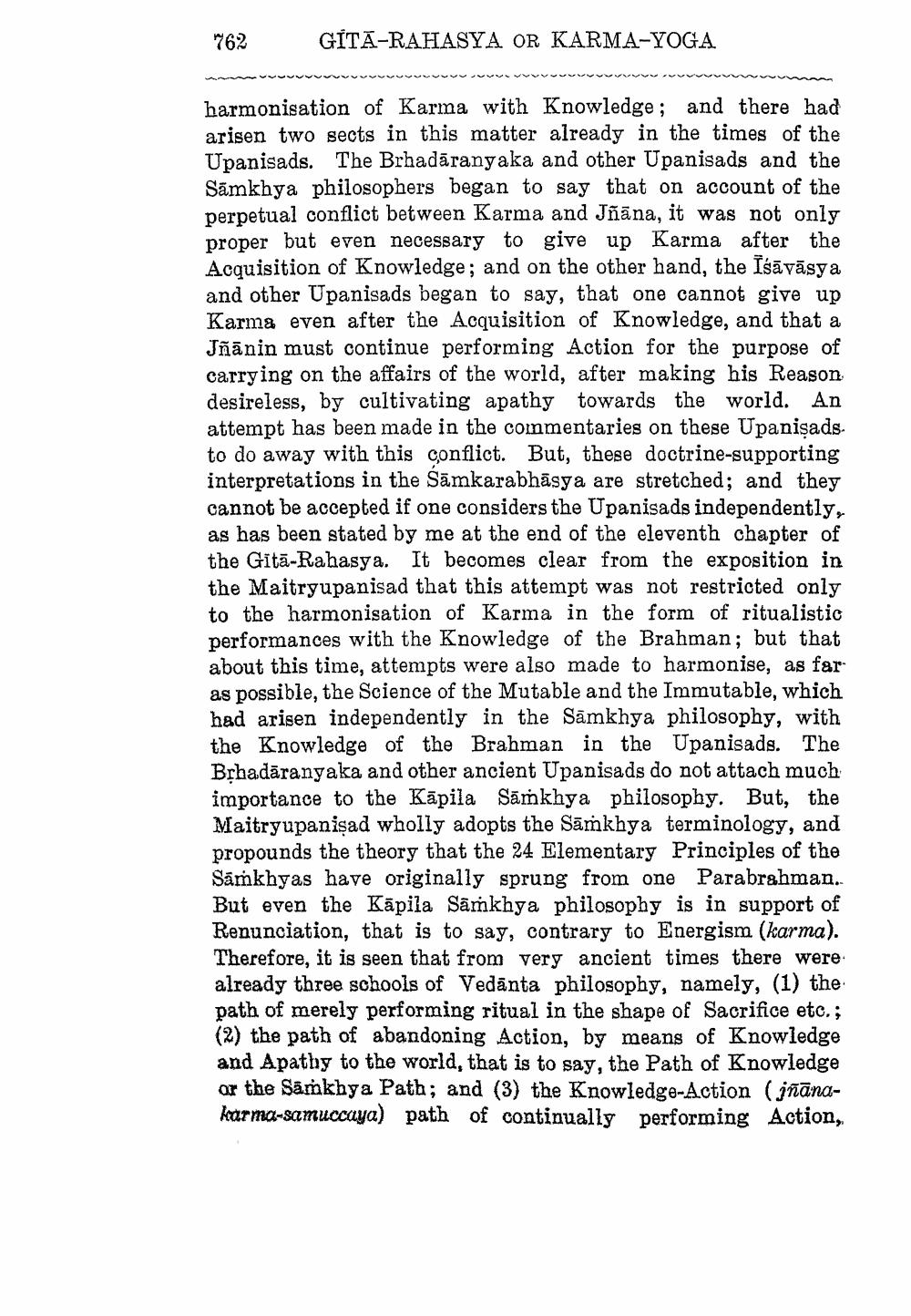________________
762
GITA-RAHASYA OR KARMA-YOGA
harmonisation of Karma with Knowledge; and there had arisen two sects in this matter already in the times of the Upanisads. The Brhadāranyaka and other Upanisads and the Samkhya philosophers began to say that on account of the perpetual conflict between Karma and Jñāna, it was not only proper but even necessary to give up Karma after the Acquisition of Knowledge, and on the other hand, the Išāvāsya and other Upanisads began to say, that one cannot give up Karma even after the Acquisition of Knowledge, and that a Jñānin must continue performing Action for the purpose of carrying on the affairs of the world, after making his Reason desireless, by cultivating apathy towards the world. An attempt has been made in the commentaries on these Upanişads. to do away with this conflict. But, these doctrine-supporting interpretations in the Sāmkarabhāsya are stretched; and they cannot be accepted if one considers the Upanisads independently, as has been stated by me at the end of the eleventh chapter of the Gītā-Rahasya. It becomes clear from the exposition in the Maitryupanisad that this attempt was not restricted only to the harmonisation of Karma in the form of ritualistic performances with the Knowledge of the Brahman; but that about this time, attempts were also made to harmonise, as far as possible, the Science of the Mutable and the Immutable, which had arisen independently in the Sāmkhya philosophy, with the Knowledge of the Brahman in the Upanisads. The Brhadāranyaka and other ancient Upanisads do not attach much importance to the Kāpila Sāmkhya philosophy. But, the Maitryupanişad wholly adopts the Sāmkhya terminology, and propounds the theory that the 24 Elementary Principles of the Samkhyas have originally sprung from one Parabrahman. But even the Kāpila Sāṁkhya philosophy is in support of Renunciation, that is to say, contrary to Energism (karma). Therefore, it is seen that from very ancient times there were already three schools of Vedānta philosophy, namely, (1) the path of merely performing ritual in the shape of Sacrifice etc.; (2) the path of abandoning Action, by means of Knowledge and Apathy to the world, that is to say, the Path of Knowledge or the Samkhya Path; and (3) the Knowledge-Action (jñānakarma-samuccaya) path of continually performing Action,




